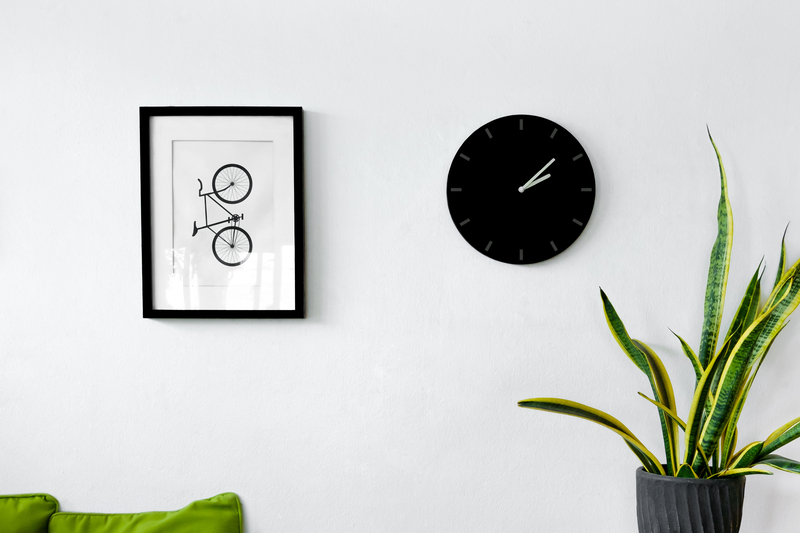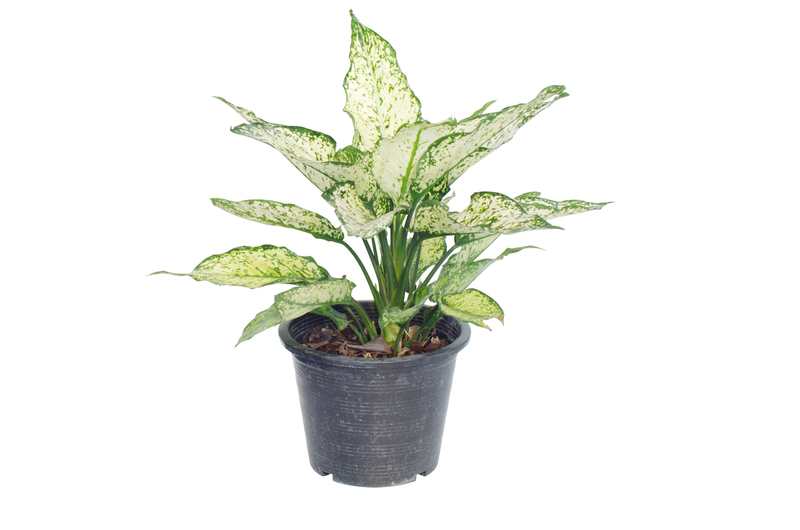Plant Selection for Canine-Friendly Gardens
Posted on 28/05/2025
Plant Selection for Canine-Friendly Gardens: The Ultimate Guide
Are you a dog lover dreaming of a lush, beautiful garden but worried about your pup's safety? Choosing the right plants is crucial for creating canine-friendly gardens that are both gorgeous and safe for your four-legged companions. In this comprehensive guide, we'll explore dog-safe plants, tips for designing pet-proof landscapes, and how to avoid toxic flora, all while keeping your garden vibrant and inviting.

Why Focus on Plant Selection for Dog-Friendly Gardens?
Pets, especially curious dogs, love to explore, sniff, and sometimes chew on greenery. A well-thought-out dog-safe garden not only protects your canine companions from toxic plants but also encourages healthy outdoor activity. By selecting non-toxic, robust varieties and designing with your dog's needs in mind, you can prevent veterinary emergencies and foster harmony between your pets and your garden space.
- Prevents accidental poisoning.
- Minimizes costly vet visits.
- Encourages safe play and exercise.
- Supports a healthy, interactive environment.
Common Hazards in Gardens for Dogs
Plants Toxic to Dogs
Many popular ornamental plants are harmful--even deadly--to dogs if ingested. Plant selection for canine-friendly gardens starts by knowing what to avoid.
- Oleander: Every part is toxic and can cause fatal heart problems.
- Sago Palm: Contains cycasin, extremely poisonous and often fatal.
- Foxglove: Contains digitalis, dangerous for the heart.
- Azalea/Rhododendron: Can cause vomiting, diarrhea, and even death.
- Lilies: Especially dangerous to cats, but can also harm dogs.
- Daffodil: Bulbs are most toxic, causing severe digestive upset.
- Yew: All parts (including seeds) are highly poisonous.
- Aloe Vera: Soothing to humans, but toxic if eaten by dogs.
- Hydrangea: Contains cyanogenic glycosides, leading to poisoning symptoms.
Always consult a veterinarian or reliable pet-safe plant list when planning your garden.
Key Considerations for Selecting Dog-Safe Plants
- Non-toxicity: Verify plants are safe via reputable sources (e.g., ASPCA, Pet Poison Helpline).
- Durability: Choose tough, resilient plants resistant to rough play and trampling.
- Maintenance: Prefer perennials and low-care plants to minimize disruption from digging or running paws.
- Shade and Shelter: Include shrubs or trees that offer cool spots for dogs to lounge on hot days.
- Sensory Experience: Dogs love fragrant, textured, or rustling plants that enrich their time outdoors.
Tip: Observe your dog's behavior in the yard before finalizing your plant selection. Some pups dig, others graze, and a few may rest in the sun. Match your landscape to your dog's unique quirks!
Top 15 Dog-Friendly Plants for Safe Gardens
Here is a curated list of attractive, non-toxic, and durable plants for canine-safe landscaping. These varieties are suitable for most climates and require varying levels of care, so there's something for everyone!
- Creeping Thyme (Thymus serpyllum): A fragrant ground cover that tolerates foot traffic and releases a lovely scent when crushed.
- Marigold (Tagetes spp.): Bright, cheery blooms and a natural pest deterrent, safe and tolerant to boisterous dogs.
- Camellia: Lush, evergreen shrubs with beautiful flowers and no toxic effects if nibbled.
- Snapdragon (Antirrhinum majus): Colorful annuals, non-toxic and safe for dogs, adding a playful pop to borders.
- Bamboo Palm (Chamaedorea elegans): Hardy, safe palms that provide shade and are well-suited to container gardens.
- Rosemary (Rosmarinus officinalis): An aromatic herb, great for cooking and safe for pets, also deters pests.
- Magnolia Bush (Magnolia stellata): Lovely spring flowers and sturdy branches. Non-toxic for canine friends.
- Sunflower (Helianthus annuus): Towering, cheerful blooms that are non-toxic and provide seeds that attract birds.
- Fuchsias: Safe for pets, available in many colors, and thrive in hanging pots or shady corners.
- Boston Fern (Nephrolepis exaltata): Lush, air-purifying, and completely non-toxic to dogs.
- Coral Bells (Heuchera): Colorful foliage, low maintenance, and tough enough for regular paw traffic.
- Zinnia: Bright and bountiful flowers; non-toxic and perfect for bedding displays or containers.
- Basil (Ocimum basilicum): Edible, easy to grow, and a wonderful addition to both garden and kitchen.
- Pineapple Sage (Salvia elegans): Aromatic leaves, hummingbird-friendly blooms, and completely safe for pets.
- Spider Plant (Chlorophytum comosum): Hardy, air-purifying, and perfect for hanging baskets out of digging reach.
Dog-Proof Garden Design Strategies
Smart Layouts for Happy Pets and Healthy Plants
Designing a pet-friendly landscape isn't just about plant selection. The layout matters, too! Follow these principles to strike the right balance:
- Dedicated Dog Paths: Use flagstone, mulch, or gravel to create fun "dog runs" through your garden--dogs love predictable routes.
- Boundary Planting: Use tough, non-toxic shrubs or fencing to separate delicate areas from dog play zones.
- Raised Beds & Containers: Elevate prized or delicate plants to protect them from digging and damage.
- Digging Zones: Satisfy natural instincts by designating sand or mulch-filled pits as "legal" digging areas.
- Shade & Shelter: Place benches, low shrubs, or trees in strategic spots where your dog likes to rest.
- Water Features: Consider dog-friendly fountains or splash areas as a cool, interactive focal point.
Mulch Matters: Choose Wisely
Some mulches are harmful if ingested by dogs (e.g., cocoa mulch is toxic and should be avoided). Instead, use:
- Pine straw
- Cedar shavings (in moderation)
- Rubber mulch (safe, but use only products free from chemical treatments)
- Composted leaves
Always monitor your dog's chewing habits and consult your vet if unsure about a product.
Plants to Avoid in a Canine Garden
For safe, canine-friendly plant selection, avoid the following:
- All parts of Lilies (can cause kidney damage)
- Autumn Crocus (can be fatal if eaten)
- Cyclamen (toxic tubers)
- Philodendron and Dieffenbachia (irritating to mouth and digestive tract)
- Mistletoe and Holly (especially berries)
- Ivy (especially seeds and leaves)
Check plant labels and verify unfamiliar species with resources like the ASPCA's Toxic and Non-Toxic Plant List.
Caring for Your Canine-Proof Garden
- Regular Clean-ups: Pick up pet waste promptly to maintain hygiene and prevent plant damage.
- Routine Inspection: Watch for signs of plant nibbles or digging and adjust fencing or deterrents as needed.
- Prune and Mulch: Remove spent leaves, prune broken branches, and refresh mulch to keep beds safe and appealing.
- Non-toxic Pest Control: Avoid harsh chemicals; use pet-safe options like neem oil, insecticidal soap, or diatomaceous earth.
- Secure Compost: Compost heaps can attract dogs; ensure your pile is fenced or covered.
FAQ: Creating Dog-Safe Gardens
1. Can dogs eat grass and herbs from the garden?
Many dogs occasionally munch on grass, which is generally safe--especially if it's pesticide-free. Edible herbs like rosemary, basil, and thyme are non-toxic, but should be given in moderation.
2. What ground covers can withstand rough play?
Creeping thyme, clover, and buffalograss are excellent choices for dog-resistant lawns. They hold up to frequent running and minimize bare patches.
3. How can I stop my dog from digging up plants?
Give your pup a "legal" digging zone (a sand pit or mulch pile), reinforce boundaries with rocks or low fencing, and choose tough perennials around play areas.
4. How do I treat a pet in case of suspected plant poisoning?
Remove any plant material from your dog's mouth, keep them calm, and visit a vet immediately. Take a sample of the plant ingested for identification and prompt treatment.

Inspiring Design Ideas for a Dog-Friendly Landscape
- Canine Agility Trails: Incorporate tunnels, ramps, and low jumps using untreated wood next to sturdy ground covers for fun and exercise.
- Shade Gardens: Combine non-toxic trees like crabapple or serviceberry with ground ferns for lush, cool retreats.
- Potager Plots: Mix safe edible herbs with flowering non-toxics in raised beds, making a feast for both humans and pets.
- Butterfly Borders: Plants like fuchsias and zinnias attract pollinators and withstand tail wags and dog traffic.
- Puppy Paths: Meandering mulch or pebble walkways lead pups to favorite lounging spots or play zones.
Conclusion: Crafting the Perfect Dog-Safe Garden
Building a thriving garden that's also dog-friendly is not only possible--it's rewarding for you and your pet! With smart plant selection for canine-friendly gardens, durable layouts, and thoughtful design, you can create a safe, beautiful sanctuary that welcomes paws, noses, and tail wags.
- Stick to non-toxic, robust plants that match your climate.
- Designate safe play areas, rest zones, and shady nooks.
- Avoid toxic species and always double-check before planting something new.
- Stay vigilant and proactive by observing your pup's habits and maintaining your garden regularly.
With these tips, both your garden and your canine companion will flourish. Happy gardening!

